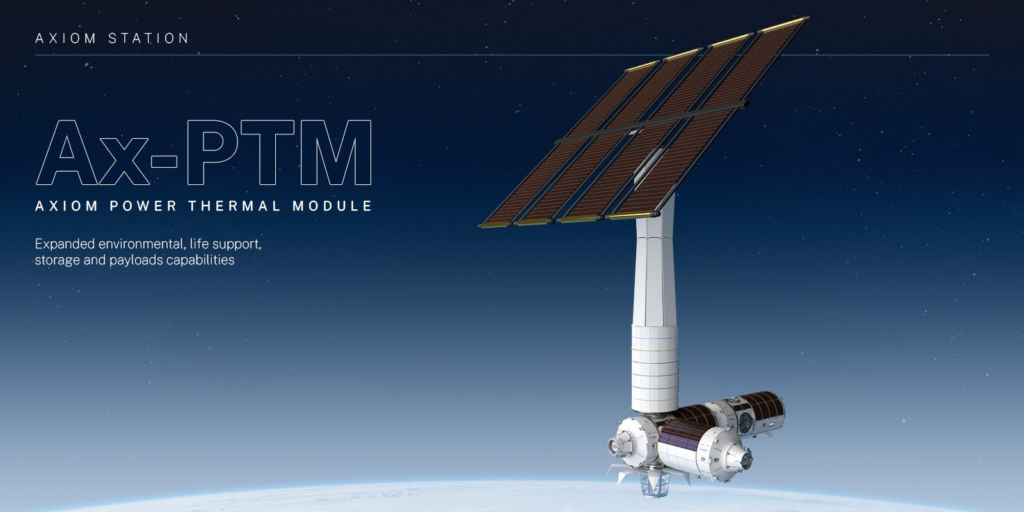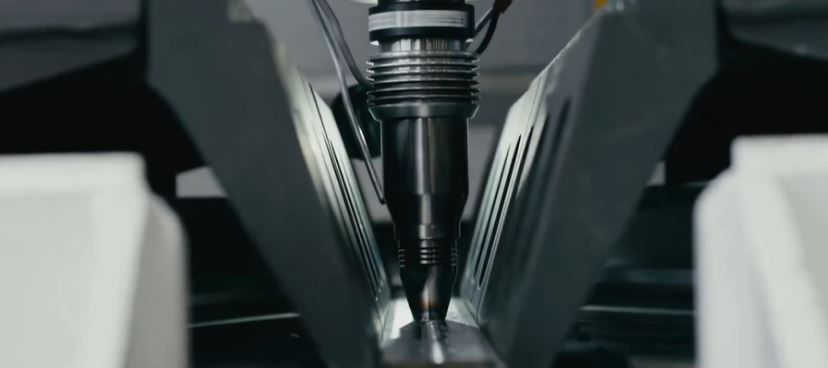We are starting to get real close to the addition of commercial space stations in orbit. One company in particular, Axiom Space, has its first module nearly done with the next major step being launch. Thanks to a deal with NASA, the company plans to send one module up at a time and connect them to the International Space Station.
Once all the modules have been launched and the station can support itself, they will disconnect it and Axiom Station will be on its own. Here I will go more in-depth into the company’s current progress, the final manufacturing steps, what’s next, and more.
Final Welding

Only hours ago Axiom Space tweeted saying, “Axiom Station’s ‘Habitat One’ module has taken another major step towards completion at the Thales Alenia Space production facility in Turin, Italy. Take a look at the module bulkhead and forward cone coming together as Axiom Space expands global access to low Earth orbit.” This included a new video inside the factory showcasing some of the progress.
Here they mentioned a few important milestones related to this specific module. The main items being the final weld for the main structure and some qualification testing on windows. The program manager for Axiom Station was quoted saying, “Behind me, we can see the most representative element of where we are now with the manufacturing phase of Axoim Station, it is very close to being completed.” To clarify, the head of low Earth orbit programs at Axiom mentioned, “We are at the last welding activity for this element. The team is working three shifts day and night” she said. In other words, teams are making a final push to finish this element before it gets shipped back to the United States.
In another quote, the senior quality engineer pointed out, “So for the welding, the team is working on the aft section. We are currently welding flight hardware for the cone, and on the window side, we are doing the qualification model testing for the external window.” There are four windows on each Axiom habitation module and each of them is made by the internal and external parts. By now, these four windows have all been tested and are now ready to be installed on the module. More specifically the next step is the completion of the qualification of the external window and then the assembly of the external window flight model and integration on the Axiom habitation module. Once complete, the station will be ready.
Earlier this year, the Axiom president said, “The pressure vessel is undergoing welding at Thales Alenia, our partner in Italy. They’re some of the largest forgings in the world, there’s only a couple of places in Europe that could even forge some of the pieces” he said. For a while now Axiom has been working with this company to create some of the main station structures. So far, none of the segments have been shipped back to Axiom as they weren’t complete. This however is set to change not long from now.
In another quote, he mentioned, “The pressure vessel will arrive in Houston next year, and then we’ll do all the final outfitting at our spaceport facility. And in the 50-year history of human space flight and Houston it will be the first human-rated spacecraft built in Houston” he pointed out. From there Axiom would complete the initial module before launching it in 2026 to be attached to the ISS. This initial module is named Axiom Hab 1, or Ax-H1. It will be outfitted with crew quarters, and will feature both research and manufacturing capabilities.
In another statement, the company says, “The construction of the world’s first commercial space station is underway. Following completing preliminary and critical design reviews in collaboration with NASA, our partners at Thales Alenia Space began welding and machining activities for the primary structures of Axiom Station’s first module. Axiom Space is preparing for a 2026 launch of the first section of our next-generation platform that will operate in low-Earth orbit” they said.
All the way back in 2020, NASA selected Axiom Space to provide at least one habitable commercial module to be attached to the ISS as the agency continues to open the station for commercial use. They said, “This selection is a significant step toward enabling the development of independent commercial destinations that meet NASA’s long-term needs in low-Earth orbit, beyond the life of the space station, and continue to foster the growth of a robust low-Earth orbit economy. With the help of NASA, the time needed to get initial modules in space and operating is accelerated significantly. A big benefit for Axiom and its future plans.
The Station Roadmap

While the ISS connection is a big benefit, it won’t last forever. Current plans call for the ISS to be retired by around 2030. Obviously, around that time, any Axiom segments will need to be disconnected. For the ISS, the retirement process will involve purposely deorbiting the massive station to burn up in the atmosphere. This being said, NASA knows it will still need access to LEO. For this reason among others, they are helping fund and facilitate different commercial projects including Axiom Station. Fortunately for Axiom, they are the only company with the unique opportunity to attach to the ISS. A process they plan to take advantage of.
While dates have changed quite a bit over time and will likely continue to, Axiom has set up a roadmap of station segment launches and completion dates. Hab One is the first module which contains living quarters for four crew members and approximately 40 cubic meters of interior volume to accommodate research and manufacturing applications. Inside the module, you can expect glove boxes, microscopes, 3D printers, materials testing equipment, and more. Axiom describes it as the nucleus of future human activity in Earth’s orbit. Each personal crew quarter is equipped with a large Earth-viewing window and touch-screen comms panel. A docking adapter allows visiting vehicles to dock to the Axiom Station. Four radial ports on the hub provide for the addition of future modules and increase the station’s docking capability. As the initial module, this feature is especially important. It will have propulsion, guidance, navigation, and station control systems. The first windowed pressurized module is approximately 11 meters long and 4.2 meters in diameter at the widest part. They also put a lot of effort into the interior design of this module among others. Rather than modules filled to the brim with wires and various technologies, they are trying to keep it minimal in some regards.
Next is Axiom’s Hab Two module which is expected to launch in 2027, a year after Hab one. It will provide quarters for an additional four crew members allowing the station to support up to eight crew. It provides complete ECLSS support, commercial high-data satellite communications, and a Canadarm 3-styled Remote manipulator system for the Axiom Station. Some of the features include state-of-the-art, next-gen orbital lab equipment, flexible and cost-effective interfaces, and high-bandwidth communication link to onboard research. Axiom offers twice the research volume and features a total of eight radial ports for the docking of visiting vehicles and the addition of further modules. In a lot of ways, this second module is very similar to the first.
Next, you have Axiom’s Research & Manufacturing Facility module, expected to launch relatively soon after the second module. It provides access to the unique microgravity environment as a platform to conduct innovative research, product development, process improvement, and manufacturing. The module will launch and arrive at the station with an extension on the end. This extension (or viewing room) will be detached from the lab module and moved toward the bottom of Axiom Hab One.
Finally, you have the last planned module named the Power Thermal module, which will provide power and thermal capacity equivalent to that of the ISS via solar array to support the station so that Axiom Station will be able to support itself once it disconnects from the ISS. It is expected to launch no earlier than 2027. As far as a specific launch date, the best estimate is late 2020s. Taking a closer look at the module, it attaches to the zenith port of the Hub, with its solar array producing comparable amounts of power to the ISS. It expands on Axiom Station’s environmental control and life support capabilities, adds additional storage and payload capability, and provides an airlock to be utilized for EVAs by astronauts on board. It’s important to point out however that until AxPT is launched, Axiom Station will be relying on the ISS to help provide power.
That being said, with this final segment installed and working properly, Axiom station should be capable of operating on its own, separate from the ISS. By the time the power thermal module is set up, it shouldn’t be long before the ISS’s planned retirement, at least that’s the goal. From here they would disconnect the station and begin to move it away from the ISS. At that point, Axiom station would be completely independent and ready to begin its official operations. When looking at the station’s schedule as a whole, it definitely is ambitious. On the bright side, at least the two next modules share quite a few similarities with the one nearing completion. This could help speed up the process as teams have some experience now. Axiom has also already begun working on parts of the future modules, including large windows, hatches, thrusters, etc. All in hopes of completing the initial station design by late this decade.
Conclusion
Axiom Space is just about done with its first human-rated space module. The final welding activities are happening right now and soon after it will be sent to Houston. From there we can expect some final work and testing and then a launch in 2026. We will have to wait and see how it progresses and the impact it has on the space industry.
